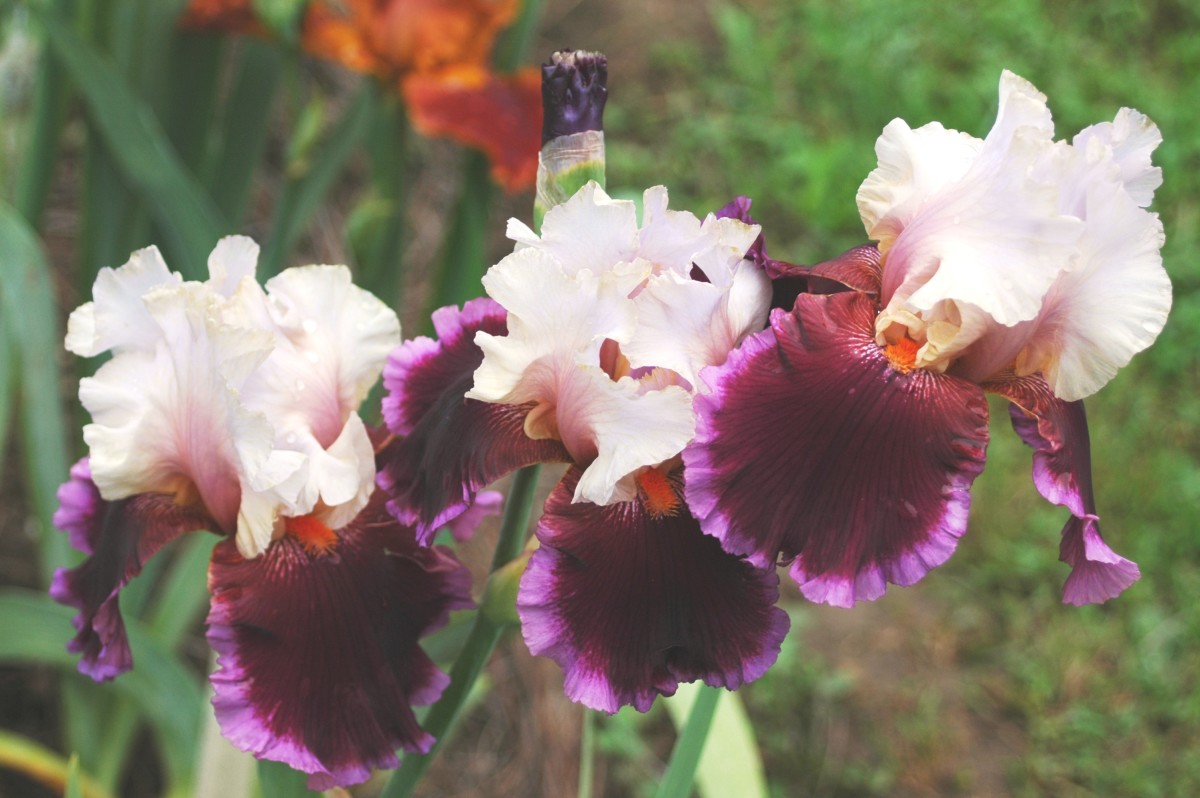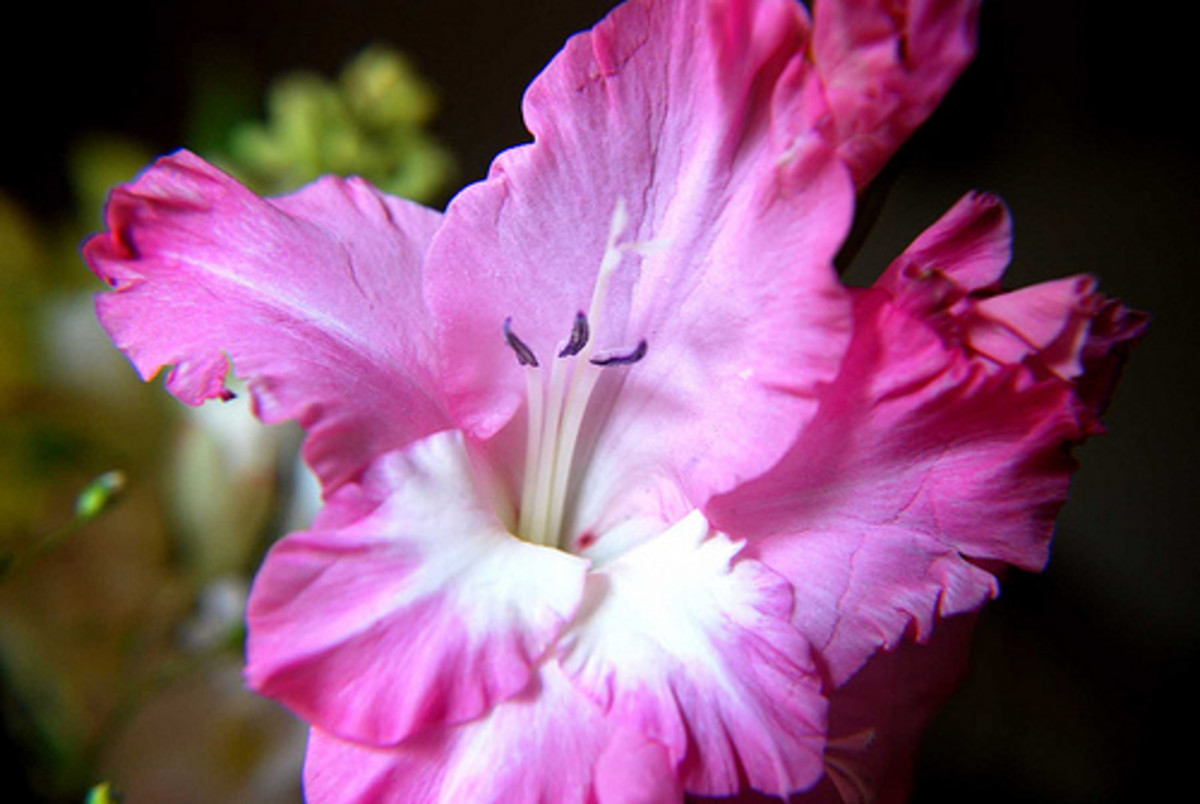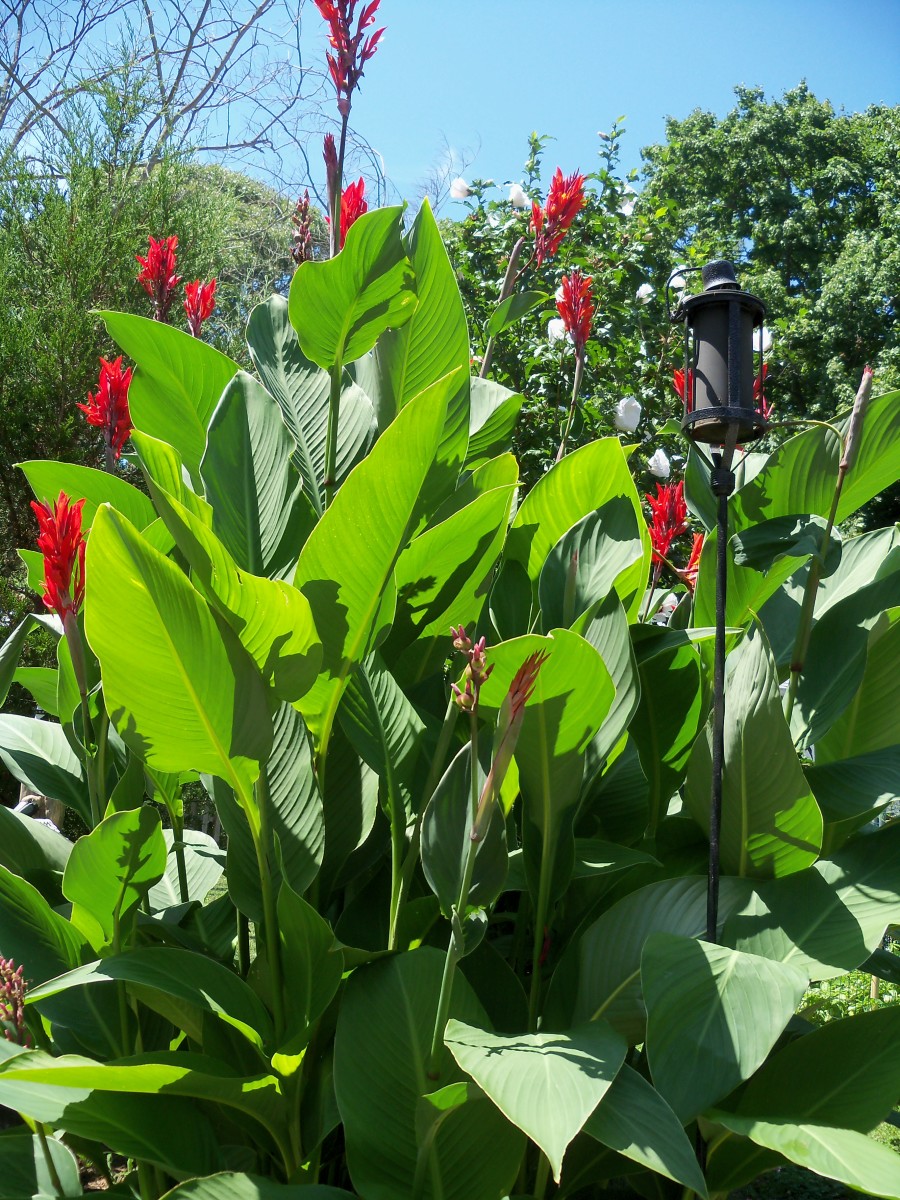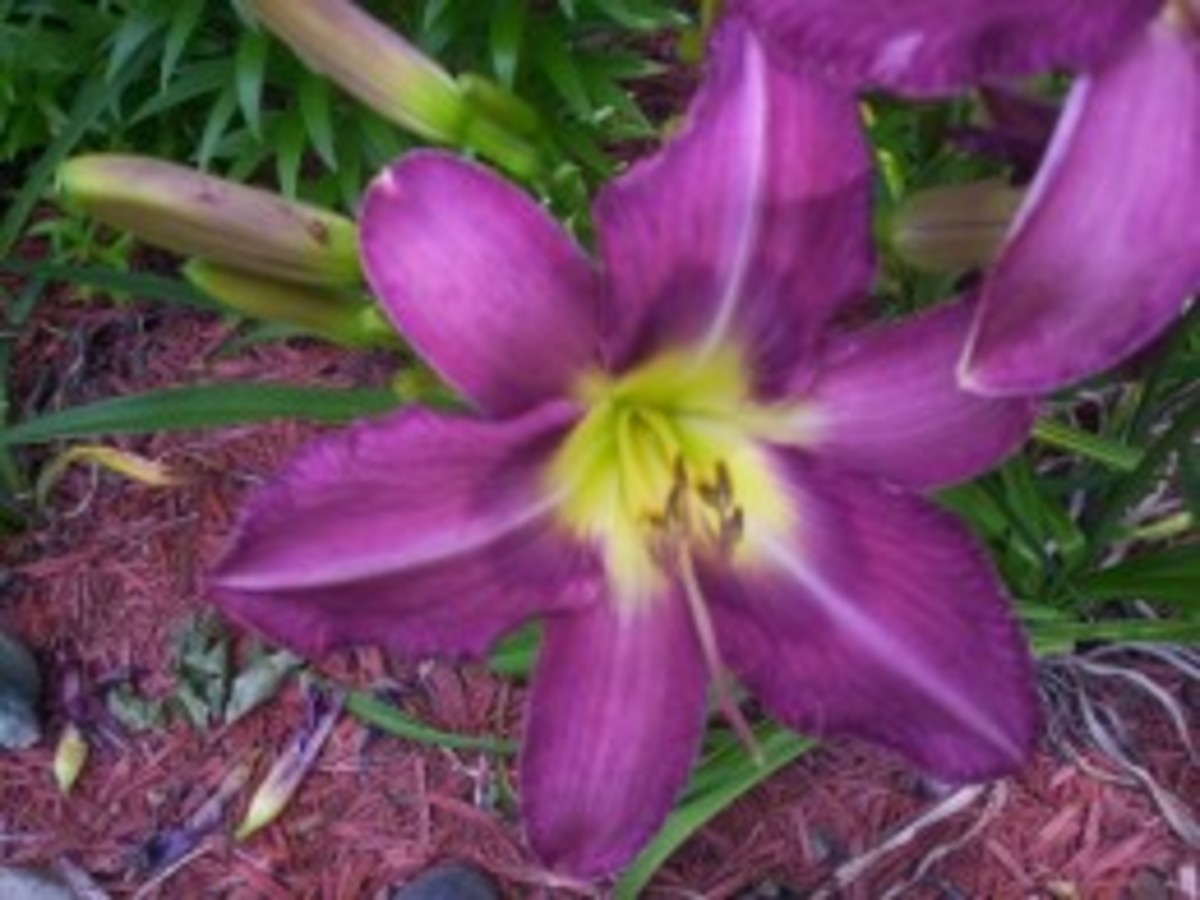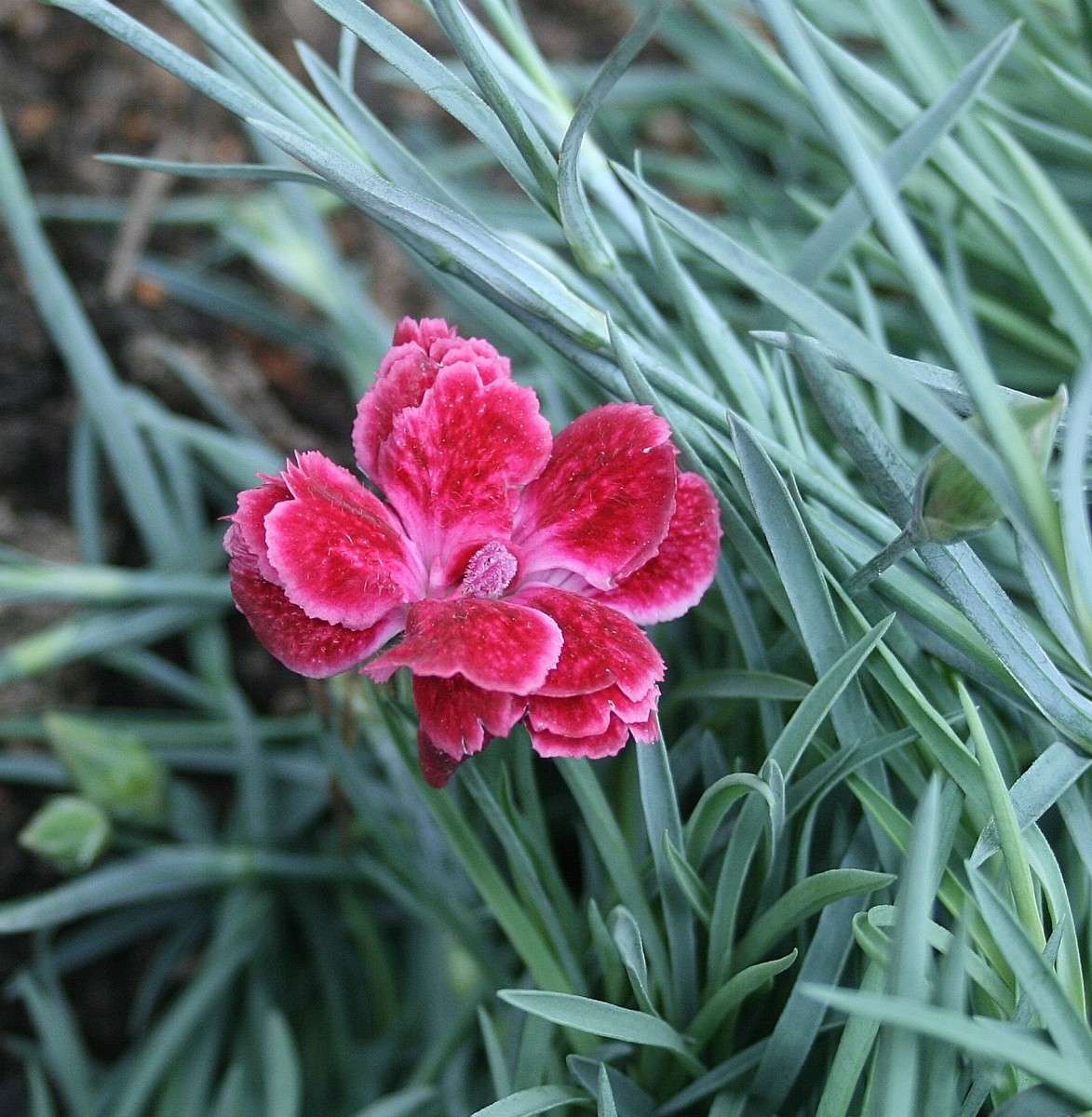Growing Tips for Calla Lilies
Calla Lily
The calla lily, which is also known as Lily of the Nile, Zantedeschia, Easter lily or Arum lily, is a beautiful plant known for its trumpet-like or funnel-shaped leaves.
Most people think of the gorgeous leaves as the flower, but the leaves actually shape around the real flower, which is hard to see because of the cylindrical shape of the calla lily leaves.
So when people talk about calla lilies blooming, they're really referring to the emergence of these colorful leaves rather than the real hidden flower inside them.
Along with being showcased during the Easter season, calla lilies are also used in a number of other formal occasions, including funerals and weddings, among others.
White Calla Lily Photo
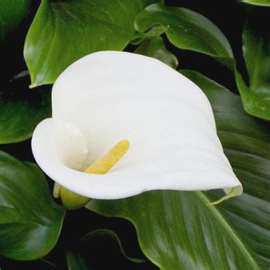
Growing Flowers Tips
- How to Grow Beautiful, Colorful, Fragrant Climbing Roses
If there's an empty spot in your landscaping scheme that needs to be filled, a fence that needs something to be added to, or a wall somewhere that looks too bare, a climbing rose could be just the thing to get things looking right in your yard. ... - How to Grow Magnificent Gladiolus Year After Year
Gladiolus, which are also at times called the sword Lilly, which comes from shape of the leaves of the beautiful flower, are a fantastic flower used for celebrations, cut flowers and places for show in the garden or yard. The flower has become a... - How to Grow Liatris or Blazing Star
Blazing Star or Liatris is a unique flower and a member of the Aster family. It is also known by the names gay feather, colic root and button snake root. What is interesting about it is it is among the few flowers in the world that bloom from the... - Growing Beautiful Lilies
Lilies are one of the most beautiful and fulfilling flowers to grow. With just a few tips anyone can grow them well and be very successful with this particular flower variety. Not only are lilies fantastic to look at and a terrific addition to...
Calla Lily Blooming Period
Although they aren't really a lily at all, calla lilies definitely have the look. They are actually a member of the family Araceae. They bloom in the latter part of spring through the early part of summer, with the blooming season ranging in duration from around six weeks to eight weeks.
This can be altered depending on the zone and how much sun the calla lily receives. In the full sun calla lilies will bloom or show quicker.
Where to Grow Calla Lilies
Calla lilies love the sun, and in the northern, cooler climates they should be planted in full sun. In parts of the United States where it's very hot, they should be planted in an area with partial shade.
While calla lilies like water, they don't like to be soggy, so be sure to plant them in a place that has good drainage. They thrive in immediate areas around ponds if you have one or more of them.
They will also do better if they are planted in a place with some protection from strong winds, although you can stake them if you need to.
Variety of Calla Lilies
More Flower Growing Tips
- Growing Tips for Calla Lilies
The calla lily, which is also known as Lily of the Nile, Zantedeschia, Easter lily or Arum lily, is a beautiful plant known for its trumpet-like or funnel-shaped leaves. Most people think of the gorgeous leaves as the flower, but the leaves... - How to Grow Extraordinary Petunias Throughout the Summer
For those who love to have beautiful and colorful homes and gardens throughout the summer, one of the easiest and most productive ways to do that is to plant petunias. There is no great amount of knowledge to have to be successful, and the... - Growing a Healthy Gardenia: Outdoors or Indoors
A gardenia, which is also known by the names Cape Jasmine, Gardenia jasminoides or Common Gardenia, is a flowering, evergreen shrub. Even though they are one of the harder flowering plants to grow, that doesn't stop people from trying over and... - How to Grow Rose of Sharon
Among my favorite of flowering plants or shrubs is the Rose of Sharon. There are few things to me more beautiful than when this outstanding flower producer shows off its blooms in the latter part of the summer. Being part of the hibiscus (Hibiscus...
When to Plant Calla Lilies
Most gardeners plant calla lilies in the spring, and since they bloom early and into the summer, that should be the practice of most gardeners.
There may be exceptions in hot climates, but overall, spring is by far the best time to sow your calla lily plants.
They won't take a frost so you must wait until all danger of a frost has passed before planting them.
How to Plant Calla Lilies
Calla lilies can be grown from seed, but I wouldn't recommend it, as the germination rate is low and it takes a long time.
It's best to plant your calla lilies in the form of rhizomes; tubers you can easily place in the ground from 4" to 6" deep. Spacing should be about a foot to a foot and a half apart, although they can be placed closer if you want that fuller look in the case of beds. But then you'll have to watch closely for fungal diseases if they get too wet. Best to keep them further apart. If you want to experiment with them being closer, place a bed somewhere to the side of the garden to see how it responds.
You can use them to accentuate areas of the garden too, with taller varieties being placed strategically near the rear of an area for early and mid-season color.
Be aware there are dwarf calla lily varieties as well as some that grow quite tall. Keep that in mind and maybe make a diagram before planting if you're using them in several strategic areas of the yard or garden.
Immediately after planting the calla lilies be sure to water the area well to give it a good start, and to settle the soil around the rhizomes.
Calla Lily Care
Most care for calla lilies are to be sure they get adequate water and that they get some fertilizer once the plant begins to flower.
The plant needs to be kept moist, but not soggy. Mulching will help keep the soil moister for a longer period of time and keep down the weeds for lower maintenance.
During the blooming season the calla lily can be fertilized every couple of weeks, or at least every three weeks.
After the blooming period is over calla lilies must go through a period of dormancy. Stop watering at that time so the plant will die back effectively.
Whether you live in a warm or cool climate, and whether you can keep the flowers outdoors or must have them indoors during the winter, the calla lily must go through dormancy in the winter in order to bloom the next growing season.
Remove the flower stems as they begin to fail. Add a layer of organic material to prepare the calla lilies for wintering in the ground. In the spring you can dig up the rhizomes and divide them at that time. Rhizomes should have roots on each part you're going to plant in the spring.
Calla Lily Care in Colder Climates
If you live in a zone where you grow calla lilies in the ground and must remove the plants in order to save them for the next year, then you should dig them out of the soil before first frost hits the area (some people wait until after the first frost).
You can dig the lilies out or simply take hold of the plant near to the ground and gently rock it back and forth until it loosens up. At that time you can slowly remove the tuber from the soil. Either way works good.
Now go through the soild to look for rhizomes that are large enough to grow but didn't send up a plant during the growing season.
Remove any plant residue from the rhizomes or tubers and lay them out in the sun to dry for several days.
From there you can store them in some dry peat moss. Storage temperatures should be in a range of 50 to 55 degrees Fahrenheit.
Divide the rhizomes before you plant them the following spring. Be sure there are roots on each tuber you plant.
How to Make Hand-Tied Calla Lily Bouquet for Your Wedding
Tips for Growing Flowers
- How to Grow Periwinkle or Vinca Plants
In this article we'll talk about periwhinkle, or vinca major and minor, which are also known as blue buttons, dwarf periwinkle, wintergreen, ground ivy, creeping vinca, death's flower, myrtle or creeping myrtle, among others. The myrtle... - How to Grow Naked Lady or Amaryllis Belladonna
The naked lady is an amazing flower, which are also known as amaryllis belladonna, belladonna lily, Jersey lily, resurrection lily, magic lily, surprise lily or the March lily, depending on what part of the world you may live in. While naked... - How to Grow Hollyhocks
Hollyhocks, or as they are officially called - alcea, continue to be a favorite among gardeners seeking to add gorgeous color and height to specific parts of their landscapes or gardens. Unfortunately, the fear of rust has resulted in some... - How to Grow a Peony
Peonies are beautiful herbaceous perennial plants which can grow anywhere from about a 18 inches tall to 5 feet tall. Those that are identified as "tree" peonies grow from 5 feet tall up to 10 feet tall. What is very appealing about
Growing Calla Lilies in Containers
There are a couple of reasons and ways to grow calla lilies in a container. Some gardeners in warmer zones grow them in containers to get a head start on the season and will transplant them in the spring. Others in cooler zones will grow them in containers with the purpose of displaying their calla lilies that way.
If you're planting them in containers for the purpose of transplanting them in the soil, you can use 6" to 8" pots. For those planting them in containers to display them there, using a 16" pot will do the job.
Although the root system of a calla lily doesn't spread out too much, the reason for recommending a 16" pot is in order to allow the soil to stay moist (smaller pots dry quicker), as well as to give room for the lily to generate more plants. They also display better in a larger pot.
For those planting in smaller pots to replant in the garden, sow the rhizomes about a month before the last expected frost day in your area.
No matter what the pot size, place the tubers about 4" below the soil or mix line.
The mix for a larger long-term container should include some organic material in it. For the smaller and short-term containers that's not as important because you'll be taking them from the pot to the soil in about a month.
Because calla lilies love the sun, place them in front of a window somewhere in the house where they'll receive plenty of sunlight.
Once it warms up enough you can place the calla lilies outside in strategic locations to add great color to your patio, sidewalk, or any other area that appeals to you.
Even with larger pots you have to check more frequently for watering needs. They do retain moisture longer than smaller pots, but not as long as calla lilies planted in the soil.
All other practices remain the same for calla lilies in pots as they do for those in the ground. As the growing season ends stop watering and fertilizing the plants so they'll enter dormancy; cut the plants back to soil level if you live in a colder zone; bring the potted plants inside for the winter.
For those choosing to grow plants in warm zones you can of course keep the calla lilies residing in pots outside during the winter.
You can keep the plants in pots and store them in a cool area; preferably a place that doesn't drop below 40 degrees Fahrenheit. Either that or you can remove the rhizomes from the pots and place them in peat moss for the duration of winter.
Calla Lily
The calla lily is an amazing flower and a fantastic option for a variety of placements in the garden, inside the home, or as landscaping choices for strategically placed pots and/or containers.
When taking into account the many heights and colors of the calla lily, it provides all sorts of options to place in different parts of garden beds. Dwarf varieties can be used to accentuate the front of the bed, or you can use the taller varieties for the back of the bed, providing a plethora of colors as a backdrop to the rest of the bed.
For those with ponds they are terrific flowers to place in areas around it, because they don't mind the moisture as long as there is ample drainage and they don't sit in soggy soil.
Add to that the gorgeous bouquets and displays you can make from calla lilies, and you have one of the more versatile and beautiful flowers to include in your gardening arsenal.
Just be aware that calla lilies contains oxalic acid, which is poisonous, and if ingested can be dangerous to people and pets.

